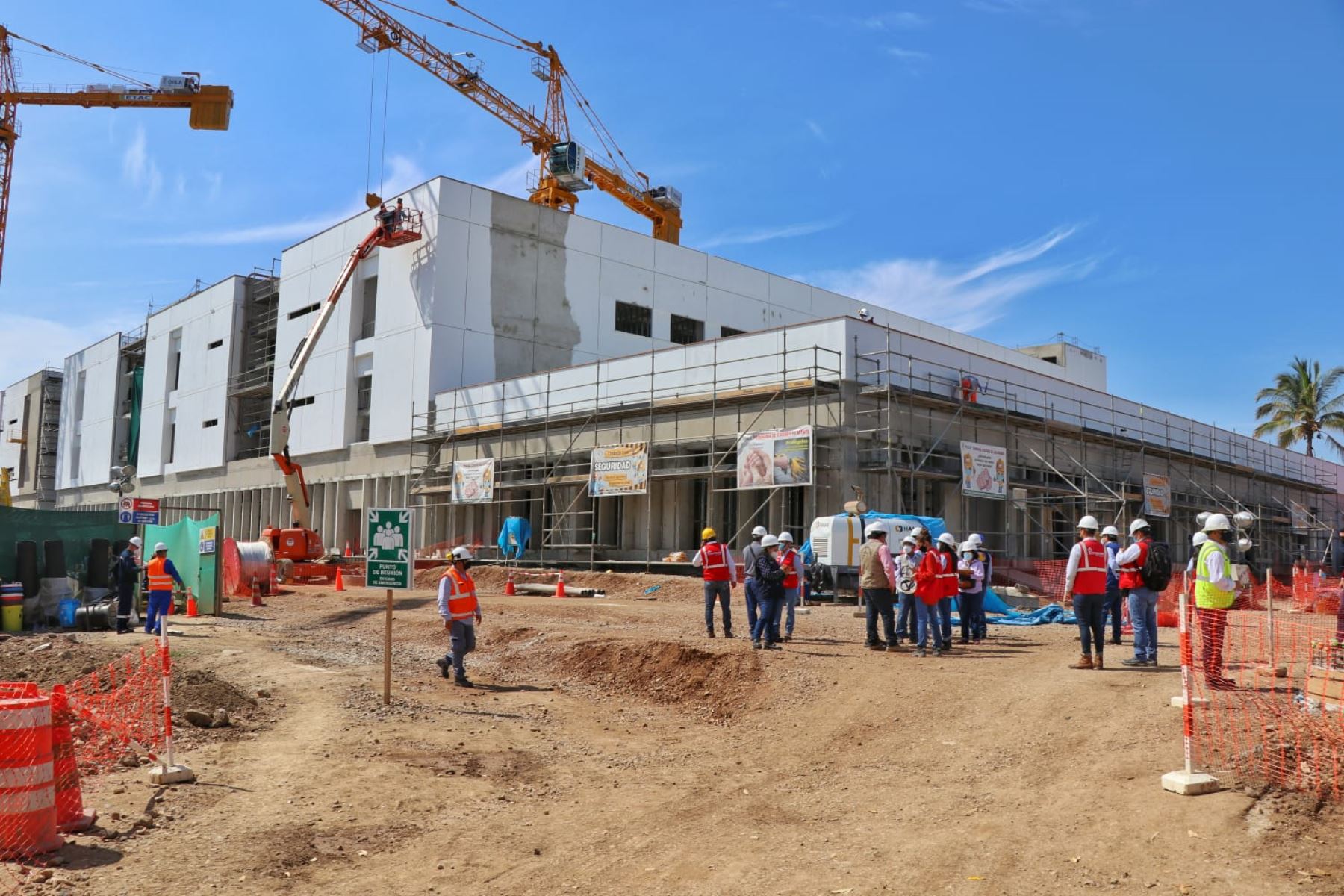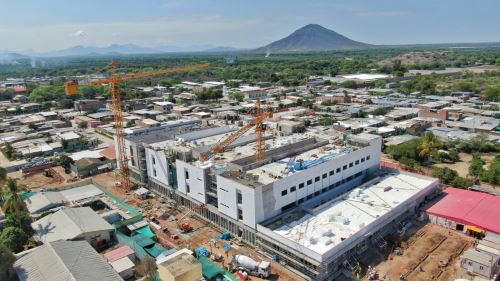The rapid progress they have made in their implementation will allow four of the five health institutions executed directly by the Authority for Reconstruction with Changes (ARCC), within the framework of the Government-to-Government Agreement (G2G) with the UK in Piura, to be delivered from April to October of this year. this.
This was evidenced after working visits made by ARCC representatives to Chulucanas Hospital II-1, Castilla Health Center I-4 and Sullana II-2 Supporting Hospital, which will serve more than 850,000 piuranas and piuranos from the provinces of Morropón, Piura and Sullana , each.
The mayor of the province of Morropón, Nelson Mío, also participated in the visit, as well as members of the regional council of Piura, Víctor Chiroque and José Morey, dean of the College of Engineers Piura, Hermer Alzamora, deputy dean of the advisory committee of the College of Engineers Peru, Segundo Reusche, dean of the Piura College of Physicians, Christian Requena, technical team representative from the UK, Daniel Glenn, head of ARCC State-to-State Procurement Modalities Management Unit, Pamela Salas, and ARCC project managers from the Puskesmas.
“This shows that the Government-to-Government Agreement with the UK is working, an example of which is the great progress of hospitals in Piura,” said ARCC deputy director in Piura, Martín Mejías.
The official said that the reconstruction of these health facilities would take place in a year and a half, which is a record time, well below traditional hospital infrastructure which takes 3 to 4 years in the best cases.
He explained that the Central Government invested more than S/950 million, through the ARCC, in the implementation of five health facilities in Piura which will have high quality standards according to what is appropriate for the population affected by the El Nio Coastal Phenomenon.
These sites will provide Piura residents with more hospice beds, offices, delivery rooms, surgery centres, cots, incubators, as well as clinical, emergency laboratories, stretchers, and a medical oxygen plant.
In addition, they will provide services such as tomography, x-rays, ultrasound, radiology and ambulance, among others.
New healthcare facilities, replacing damaged infrastructure, have all the comfort and security needed.
They have seismic isolators to deal with large earthquakes and a drainage system against rain and flooding.
In this regard, the head of the ARCC Country-to-Country Procurement Modalities Management Unit,
Pamela Salas, highlighted the good performance of the hospital’s implementation which was run within the G2G framework.
In April, it is planned to give birth to the Limón de Porcuya I-3 Health Center, located in the Huarmaca district, in the province of Huancabamba, which will benefit more than 4,100 residents of the area.
It is also planned to inaugurate the San Miguel del Faique I-4 Health Center which will benefit about 10,000 residents of the San Miguel de El Faique district, Huancabamba province.
During a visit to the Castilla I-3 Health Center, it was explained that the new infrastructure will benefit about 160,000 people in the Castilla district, in the province of Piura, and is planned to complete the work in the third quarter of this year. year.
Similarly, the Chulucanas II-1 Hospital will benefit nearly 90,000 people from the Chulucanas district and most of the province of Morropón.
Sullana Support Hospital
The reconstruction of the Sullana II-2 Supporting Hospital, given its wider scope, will be completed by mid 2023. The investment in this establishment is S/453 million and will benefit approximately 650,000 residents of Sullana province.
As detailed by the hospital’s ARCC project manager, Juan Manuel Estupiñán, with the reconstruction of the establishment, hemodialysis and tomography services have been added, meaning a substantial increase in what is offered to the province’s residents.
(FIN) NDP/JCB/MAO
More about the Andes:
An average of 100 houses collapse due to constant earthquakes in the province of Caylloma https://t.co/6uAldRiSLd
Mayor lvaro Cáceres Llica said that a housing module was needed urgently. pic.twitter.com/U03Gpn8m4X
– Andean Agency (@Agencia_Andina) March 17, 2022
Posted: 18/3/2022

“Internet trailblazer. Troublemaker. Passionate alcohol lover. Beer advocate. Zombie ninja.”








